What is a Feed Pellet Mill?
A feed pellet mill is a machine that gives you direct control over your farm’s feed program. It is a powerful tool for farmers in Australia. You can seek to improve their animal and poultry feed nutrition and efficiency. The machine presses the raw ingredients, like grains and hay, into dense and nutritionally consistent pellets with high pressure.
This pelleting process is known as pelletizing which is vital for modern livestock management. It makes feed easier for animals to digest, which improves their health and growth rates. Critically, it also can reduce feed waste. This turns every dollar spent on ingredients into nutrition for your animals. For any Australian farm, this means better control over inputs and a stronger bottom line.
Why Choose a Feed Pellet Mill in Australia?
Operating within Australia’s unique agricultural landscape demands smart solutions. You can counter challenges like drought and long supply chains with a feed pellet making machine. You can use local crops grown nearby to make your own custom feed. This can meet your animals’ dietary needs to seasonal changes. This is a significant advantage for any farming in Australia.
You can get direct access to spare parts and expertise by choosing your feed pellet mill from a reputable supplier in Australia. Making your own feed meets national quality rules. For example, it follows Feedsafe Australia’s standards – the official animal feed safety program. This can make sure you maintain full control over biosecurity and feed integrity. This is very important for to access market and protect your business.
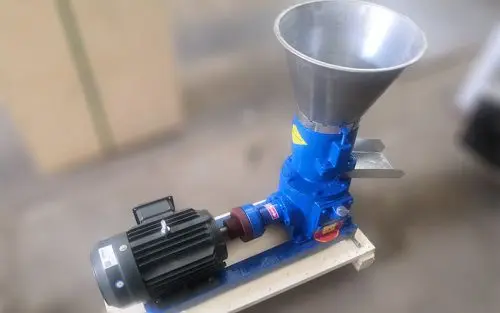
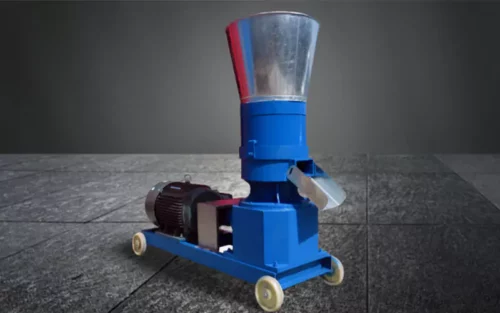
Types of Feed Pellet Mills Available in Australia
The right type of feed pellet mill depends entirely on the scale of your operation in Australia. Small-scale electric flat die pellet mills are an excellent choice for smaller holdings, like a poultry farm in the Adelaide Hills. This type pellet mill runs on a standard single-phase power. They are easier to maintain and operation with affordable price. If you want to make fish feed, it is better choose specialized fish feed making machine in Australia.
The small mill is ideal for lower feed volume needs. This small feed pellet mill can also run on diesel engine motor. Their diesel engines can provide critical independence from the grid. It is a necessity for many remote properties.
For large-scale operations and commercial use, such as a cattle station in the Northern Territory, it is better to choose an electricity-powered ring die pellet mill. These machines offer higher output and are built for continuous, heavy use. The choice comes down to matching the machine’s capability to your farm’s specific production and infrastructure realities.
Factors to Consider When Choosing a Feed Pellet Mill in Australia
Choosing the right feed pellet mill in Australia requires careful thought about your farm’s specific context. Consider the capacity you need based on your livestock. A flock of 500 Merino sheep has very different daily feed requirements than a 50-head herd of Angus cattle. Your choice of power is also critical. Assess whether your sheds have access to reliable three-phase power or if a diesel model is necessary for off-grid resilience.
Durability is non-negotiable in the harsh Australian environment. Look for mills constructed with hardened alloy steel dies and rollers that can withstand abrasive local grains. Ask about dust and moisture protection, especially if you farm in an arid or coastal region.
Finally, calculate your potential return on investment. Calculate your yearly feed expenses. Then compare them to the machine’s operating costs plus local crops like barley and lupins.
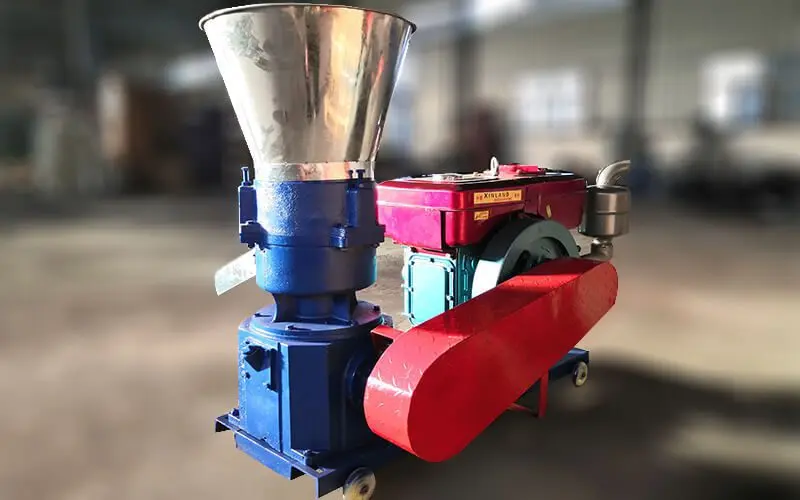
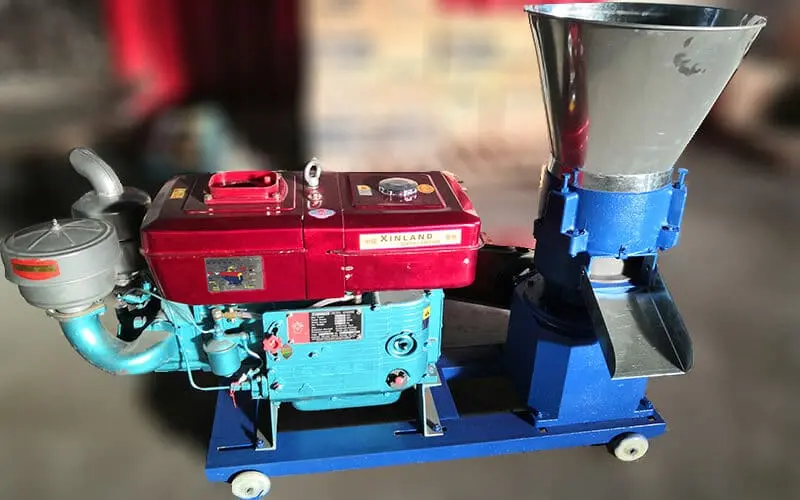
How to Buy a Feed Pellet Mill in Australia
To find the right feed making machine, go beyond a simple online search. you can consult with your local farming experts or attend major agricultural field days like AgQuip in Gunnedah. These are excellent opportunities to see machines firsthand and speak with experts. Reputable Australian suppliers will have a strong presence at these events.
When choosing the suppliers of feed pellet making machine, you need ask about their warranty period, after-sales service, expecially if they stock spare parts in Australia. You can save cost from downtime by quick access to a replacement die or roller. The supplier of feed pellet mill in Australia will be a valuable partner for boosting your business who understands the demands of Australian agriculture.
Maintenance and Care for Feed Pellet Mills in Australia
Maintaining your feed pellet making machine is key to its longevity, especially in Australia’s demanding climate. The routine of daily checks is very important. In dusty outback of Western Australia, you have to clean air filters (if you use diesel engine) and check lubrication each day.
It is necessary to check regularly the steel component for the farmers who are in the high humidity of coastal Queensland. All these works will prevent fast wear on machine easy-wearing parts. Pay close attention to your die and rollers. The two parts will wear more quickly when you process local crops like high-silica grass in Australia.
The die and roller can significantly last longer on regular inspection and rotation. Proper maintenance is not just about cleaning; it’s about adapting your practices to the local environment to protect your investment.
Feed Pellet Mill Installation in Australia
Proper installation is critical for safety and performance. For remote properties, the logistics of delivery and setup must be planned well in advance. Check if delivery trucks can reach your site. Also confirm you have proper equipment to safely unload the machine. Always install your mill on a perfectly level, reinforced concrete slab to prevent vibration and ensure stable operation.
Your setup must comply with Australian Workplace Health and Safety (WHS) regulations. This includes correct electrical wiring by a licensed electrician and ensuring all machine guards are in place. Australian suppliers often provide expert setup services. Paying for professional installation ensures your machine runs safely and correctly from the first day.
FAQs about Feed Pellet Mills in Australia
How much does it cost in Australia?
The price of a feed pellet mill in Australia varies different based on its size, quality and capability. A small electric flat die pellet mill might start from $5,00 to $3000 which is for a small farm. Industrial three-phase ring die systems can cost over $50,000 for commercial use.
These automated machines handle large-scale feed production for commercial use. Three main features set the price: 1. Add-ons pellet conditioners. 2. Motor power, the bigger engines, the higher output. 3. Stainless steel parts which can last longer in humid climates.
What is the best feed pellet mill for small farms?
For most small Australian farms, a simple and robust electric flat die feed pellet mill in Australia is the best choice. These machines are affordable and easy to maintain. Most users find them simple to operate, plus they work with standard single-phase power found in most farm sheds.
Also the type of feed pellet making machine can run on diesel engine. Machines producing 100-2000kg/hour usually handle all needs for small farms. This output range efficiently supports daily livestock feeding.
Can I make my own feed pellets at home in Australia?
Yes, producing your own feed pellets on your farm is a key advantage of owning a feed pellet mill. It gives you ultimate control over feed quality and biosecurity, which is a major concern for Australian agriculture. You can create completely custom diets with your own harvested crops. You can also significantly reduce your long-term operational costs, making your farm more self-sufficient and profitable.

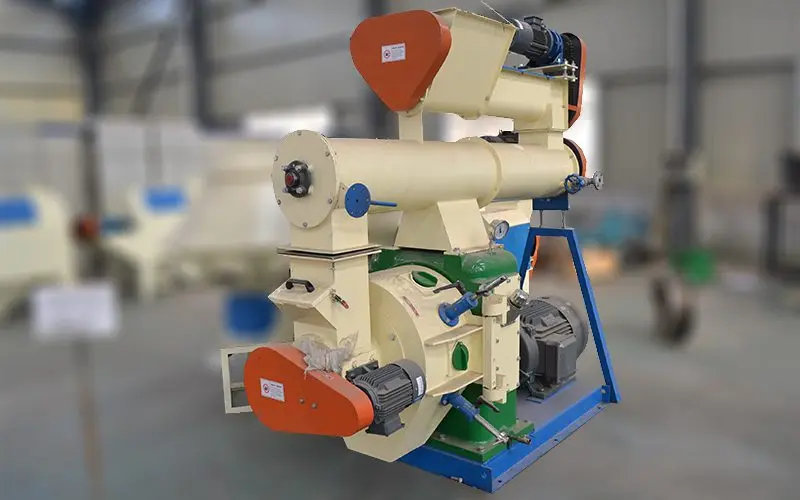
Successful Installations in Australia
Case 1: Drought-Proofing a Queensland Cattle Station
A cattle farm in Central Queensland’s dry region struggled with expensive feed and delivery delays. They spent about $45,000 on an industrial pellet mill for commercial use which can cover 20,000 hectares. This heavy-duty machine makes 800kg-1000kg of feed per hour with local sorghum and molasses.
Results:
- Annual feed costs dropped by 35%
- Paid for itself in 3 years
- Reliable feed supply during droughts
“This mill changed how we handle the feed in dry seasons, The farmer said. We’re no longer at the mercy of suppliers.”
Case 2: Organic Egg Success in Hunter Valley
A family poultry farm wanted to sell premium soy-free eggs but couldn’t find quality feed. An electric poultry feed pellet mill that processes 150kg/hour only cost them $3,000 . They make their own certified organic chicken feed with local wheat, lupins, and minerals in Australia.
Outcomes:
- They reduce 15% wasted feed
- Higher egg prices from traceable sourcing
- Full cost recovery in 18 months
“Customers trust our eggs because they see exactly how we make the feed, the owner explained, It’s true farm-to-table transparency.”
Investing in a Feed Pellet Mill for Your Farm in Australia
It is a strategic decision to invest in a feed pellet mill business in Australia for the forward-thinking Australian farmer. It is a direct investment in your farm’s resilience, efficiency, and profitability. By taking control of your feed production, you can reduce costs and improve the health of your livestock.
The important thing is you can insulate your business from volatile supply chains. In Australia’s farming regions, a feed pellet mill does more than process grain. It helps farmers create sustainable operations and build profitable futures through reliable feed production.
